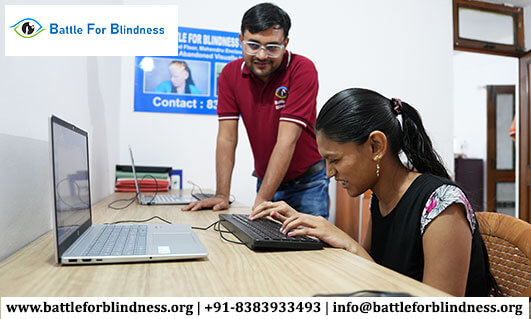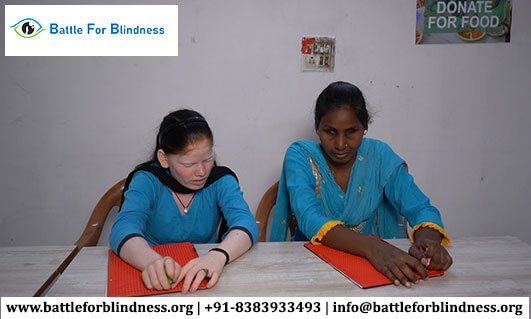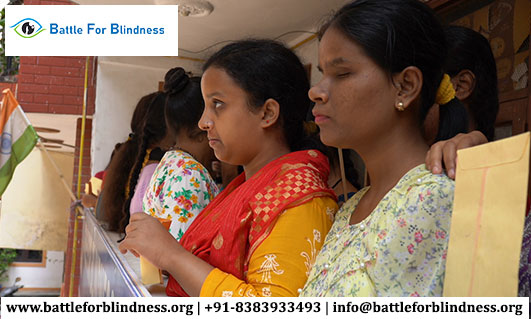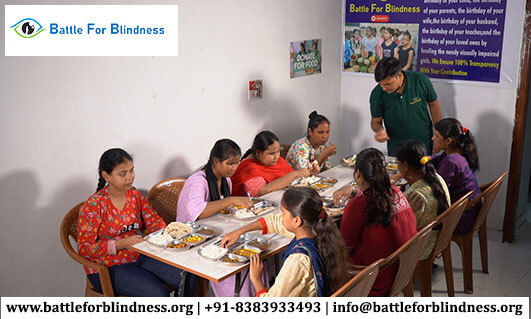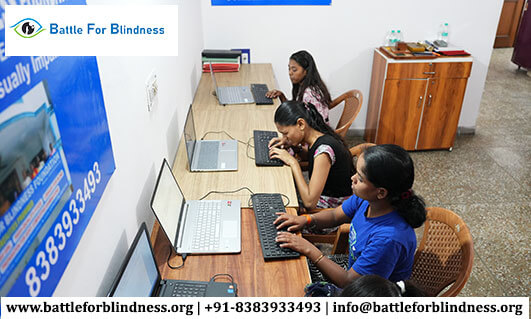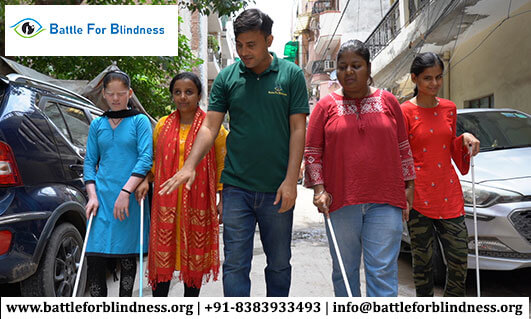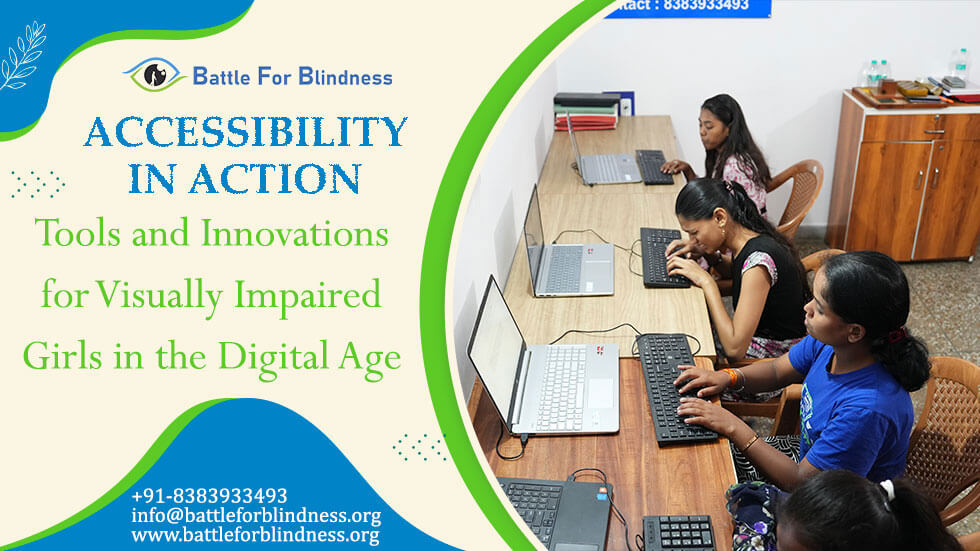
In the digital age, accessibility has become a crucial aspect of ensuring equality and empowerment for everyone, especially for visually impaired girls who often face challenges in navigating technology. Thanks to continuous innovations, the barriers once faced by these individuals are slowly being removed. This blog will explore the various tools and technologies that are reshaping the digital experience for visually impaired girls, enabling them to lead independent, fulfilling lives.
1. Assistive Technologies: Empowering Visually Impaired Girls
Assistive technology plays a pivotal role in providing visually impaired girls with equal access to digital content. These tools allow them to use the internet, read e-books, communicate with peers, and participate in various online activities without limitations. Some of the most popular assistive technologies include:
-
Screen Readers: Tools like JAWS (Job Access With Speech), NVDA (NonVisual Desktop Access), and VoiceOver for iOS are vital in helping visually impaired girls interact with their computers, smartphones, and other devices. Screen readers convert digital text into spoken words, enabling users to “hear” what is on the screen.
-
Braille Displays: These devices translate digital text into Braille, allowing visually impaired users to read on-screen content. Devices such as the BrailleNote Touch and Orbit Reader are excellent examples, offering not only Braille text but also the functionality of traditional touchscreens for navigation.
-
Voice Assistants: Amazon’s Alexa, Google Assistant, and Siri are voice-activated assistants that can help visually impaired individuals carry out everyday tasks, such as checking the weather, sending messages, setting reminders, and more.
2. Innovations in Digital Education
Education is one of the most impacted areas for visually impaired girls, and technology is making strides in providing equitable learning environments. Some noteworthy innovations include:
-
Audio Books and E-Readers: Platforms such as Bookshare and Learning Ally provide free access to a wide variety of educational materials in audio format for individuals with print disabilities. This helps visually impaired girls access textbooks and literature just like their peers.
-
Interactive Apps: Educational apps like Be My Eyes and Aira connect visually impaired individuals with sighted volunteers who can assist with various tasks, including reading text, identifying objects, and even guiding them through online learning materials.
-
Accessible Websites: Educational institutions and online platforms are increasingly focusing on making their websites and content accessible. With features like screen reader compatibility, keyboard navigation, and voice navigation, these platforms ensure that visually impaired girls can access digital education seamlessly.
3. Inclusive Social Media and Communication Platforms
Social media platforms are no longer just for entertainment but have evolved into valuable tools for communication, networking, and personal expression. Platforms like Instagram, Twitter, and Facebook have integrated accessibility features, enabling visually impaired girls to engage with their peers and build social connections. Some of these features include:
-
Image Descriptions (Alt Text): Many platforms now allow users to add descriptions to images, helping screen readers provide context for the visually impaired.
-
Voice Messages and Audio Posts: Features like voice messages or audio posts allow visually impaired girls to communicate and express themselves without the need to rely on text-based communication.
-
Accessible Video Content: Subtitles, transcripts, and audio descriptions of videos make it easier for visually impaired users to consume video content on platforms like YouTube and TikTok.
4. Smart Devices and Wearables
Wearable technology is also evolving, offering a wide range of options for visually impaired girls to improve their daily lives. Some innovative gadgets include:
-
Smart Glasses: Devices like Envision Glasses use artificial intelligence to recognize objects, read text, and even describe scenes in real-time, empowering visually impaired individuals with more autonomy.
-
Navigational Wearables: Sunu Band is a smart wearable device that uses sonar to detect objects in the environment, providing haptic feedback (vibrations) to help visually impaired individuals navigate safely and independently.
-
Smartphones with Accessibility Features: Smartphones are increasingly incorporating accessibility features, such as magnification, color adjustments, and voice commands, to cater to the needs of visually impaired girls. Phones running Android or iOS provide an array of customizations that make everyday tasks easier.
5. The Role of Artificial Intelligence (AI)
AI is one of the most exciting technological advancements in accessibility. The potential of AI to create more accessible environments for visually impaired girls is vast. AI-driven technologies like computer vision can detect objects and assist in navigation, while AI-based apps can describe the world in real-time, as seen with apps like Seeing AI by Microsoft. These apps help visually impaired users by providing detailed descriptions of their surroundings, reading printed text, and even recognizing faces.
6. The Importance of Advocacy and Inclusion
While technological advancements are crucial, social advocacy and inclusion efforts are just as essential in ensuring equal opportunities for visually impaired girls. Organizations and movements such as The National Federation of the Blind (NFB) and The American Foundation for the Blind (AFB) are dedicated to advancing policies and programs that promote access to technology, education, and social inclusion for individuals with visual impairments.
Additionally, raising awareness about the needs of visually impaired girls and encouraging tech companies to prioritize inclusivity in design can help create a more accessible world. Companies that make their digital content and services universally accessible not only benefit visually impaired users but also improve overall user experience for everyone.
Conclusion: A Bright Future for Visually Impaired Girls in the Digital Age
As we move further into the digital age, the continued development and integration of assistive technologies, along with social advocacy, hold immense promise for visually impaired girls. These innovations enable them to break free from limitations, pursue their dreams, and lead empowered, independent lives.
By continuing to invest in accessible tools and creating inclusive environments, we can ensure that visually impaired girls are not only part of the digital revolution but also able to thrive in it. With ongoing advancements in technology and a collective commitment to inclusion, the future for visually impaired girls looks brighter than ever before.
